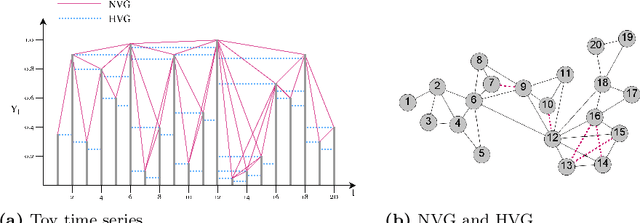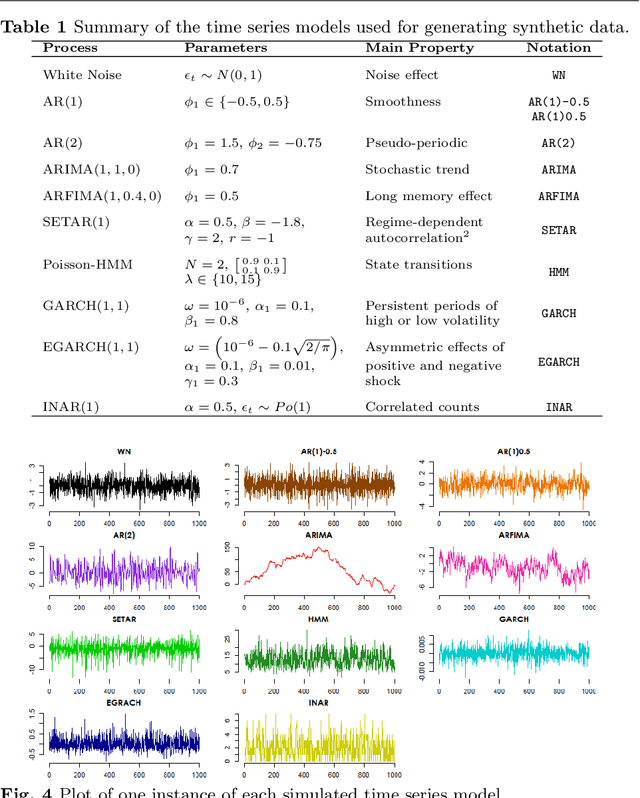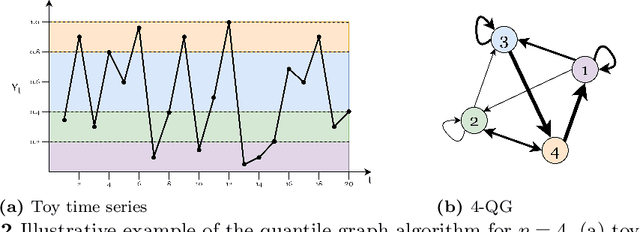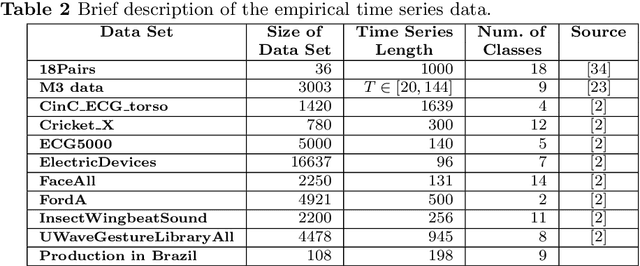Vanessa Freitas Silva
Novel Features for Time Series Analysis: A Complex Networks Approach
Oct 11, 2021



Abstract:Time series data are ubiquitous in several domains as climate, economics and health care. Mining features from these time series is a crucial task with a multidisciplinary impact. Usually, these features are obtained from structural characteristics of time series, such as trend, seasonality and autocorrelation, sometimes requiring data transformations and parametric models. A recent conceptual approach relies on time series mapping to complex networks, where the network science methodologies can help characterize time series. In this paper, we consider two mapping concepts, visibility and transition probability and propose network topological measures as a new set of time series features. To evaluate the usefulness of the proposed features, we address the problem of time series clustering. More specifically, we propose a clustering method that consists in mapping the time series into visibility graphs and quantile graphs, calculating global topological metrics of the resulting networks, and using data mining techniques to form clusters. We apply this method to a data sets of synthetic and empirical time series. The results indicate that network-based features capture the information encoded in each of the time series models, resulting in high accuracy in a clustering task. Our results are promising and show that network analysis can be used to characterize different types of time series and that different mapping methods capture different characteristics of the time series.
Time Series Analysis via Network Science: Concepts and Algorithms
Oct 11, 2021Abstract:There is nowadays a constant flux of data being generated and collected in all types of real world systems. These data sets are often indexed by time, space or both requiring appropriate approaches to analyze the data. In univariate settings, time series analysis is a mature and solid field. However, in multivariate contexts, time series analysis still presents many limitations. In order to address these issues, the last decade has brought approaches based on network science. These methods involve transforming an initial time series data set into one or more networks, which can be analyzed in depth to provide insight into the original time series. This review provides a comprehensive overview of existing mapping methods for transforming time series into networks for a wide audience of researchers and practitioners in machine learning, data mining and time series. Our main contribution is a structured review of existing methodologies, identifying their main characteristics and their differences. We describe the main conceptual approaches, provide authoritative references and give insight into their advantages and limitations in a unified notation and language. We first describe the case of univariate time series, which can be mapped to single layer networks, and we divide the current mappings based on the underlying concept: visibility, transition and proximity. We then proceed with multivariate time series discussing both single layer and multiple layer approaches. Although still very recent, this research area has much potential and with this survey we intend to pave the way for future research on the topic.
 Add to Chrome
Add to Chrome Add to Firefox
Add to Firefox Add to Edge
Add to Edge